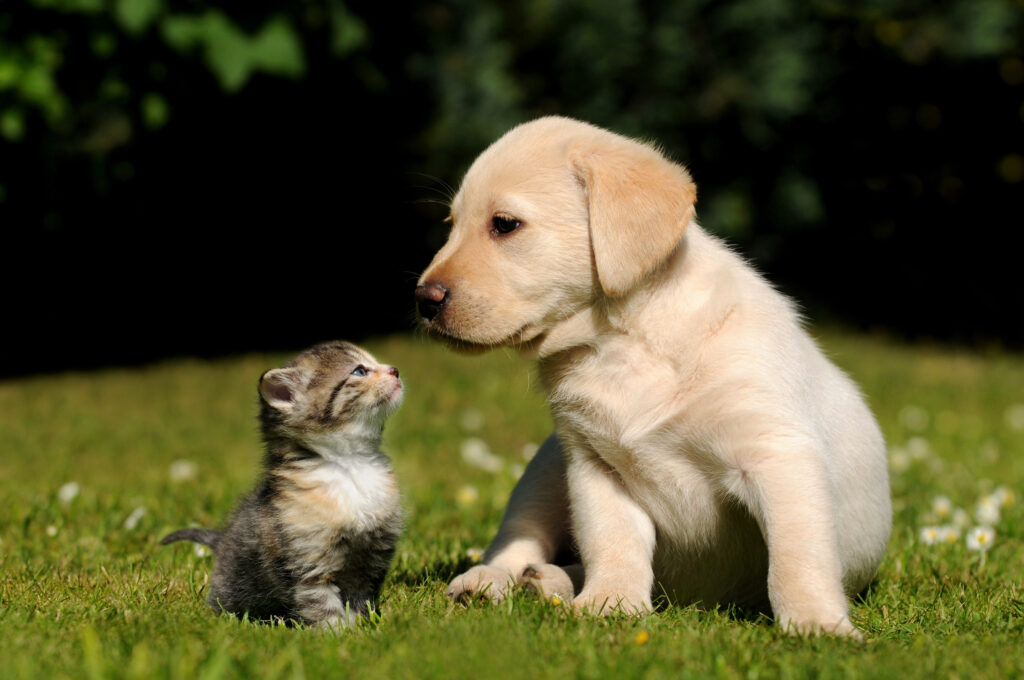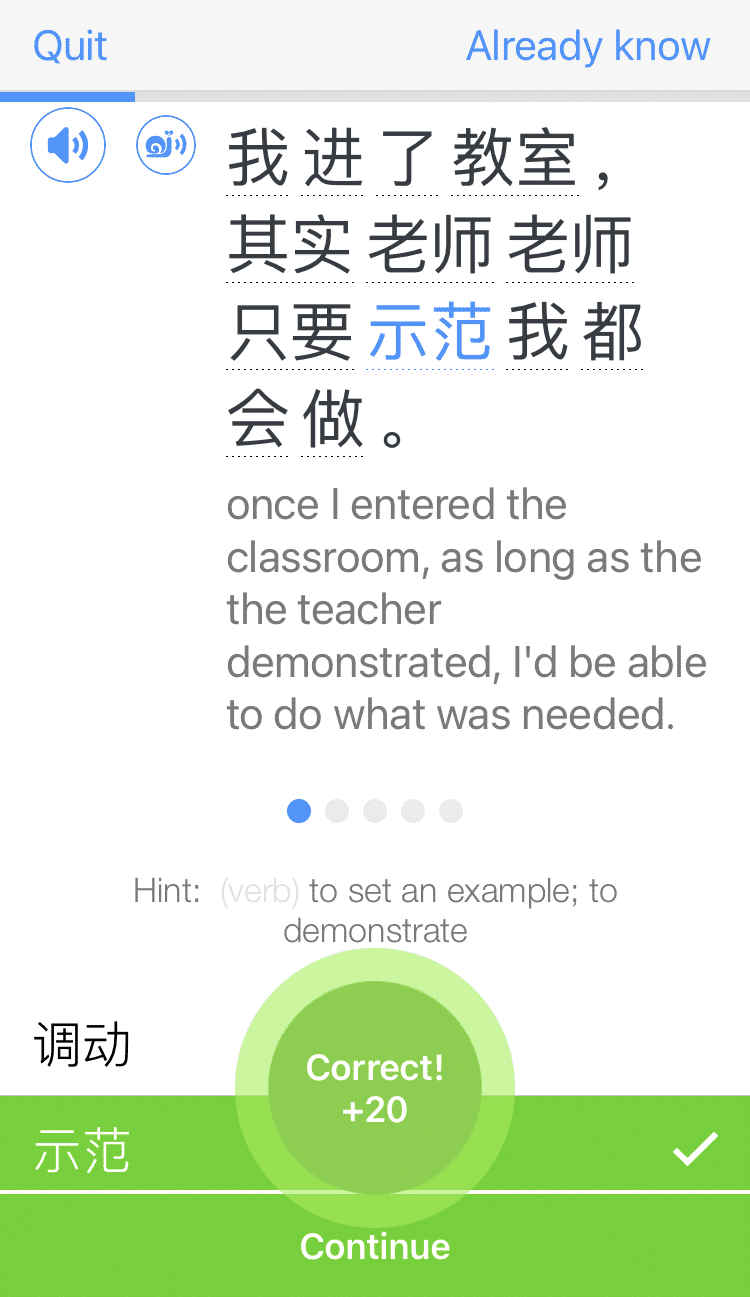
22 Chinese Animal Sounds You’ve Gotta Try Saying (with Audio and PDF)
Do you know how to say “woof” in Chinese?
Onomatopoeia is one of the most fun ways to learn Chinese.
So let loose, and learn how to bark, squeak, meow, roar and hee-haw instead!
Here are 22 Chinese animal sounds to bring some extra chipper into studying. Note: Each item first lists the animal sound in Chinese, followed by the English name of the animal who makes that sound.
Contents
- Common Chinese Animal Sounds and Onomatopoeia
-
- 1. 咯咯 (gē gē) — Chicken
- 2. 喔喔喔 (wō wō wō) — Rooster
- 3. 咩 (miē) — Sheep
- 4. 汪汪 (wāng wāng) — Dog
- 5. 喵 (miāo) — Cat
- 6. 哞 (mōu) — Cow
- 7. 叽叽 (jī jī) — Bird
- 8. 呱呱 (guā guā) — Duck
- 9. 吼 (hǒu) — Tiger
- 10. 呦呦 (yōu yōu) — Deer
- 11. 嚎 (háo) — Wolf
- 12. 唳 (lì) — Crane
- 13. 咝 (sī) — Snake
- 14. 嘶 (sī) — Horse
- 15. 嗡嗡 (wēng wēng) — Bee
- 16. 蛐蛐 (qū qū) — Cricket
- 17. 吱吱吱吱 (zhī zhī zhī zhī) — Mice
- 18. 呃啊 (è a) — Donkey
- 19. 蝈蝈 (guō guō) — Frog
- 20. 咕噜 (gū lu) — Doves
- 21. 哼哼 (hēng hēng) — Pig
- 22. 哑哑 (yā yā) — Crow
- Fun Videos with Chinese Animal Sounds
- And One More Thing...
Download: This blog post is available as a convenient and portable PDF that you can take anywhere. Click here to get a copy. (Download)
Common Chinese Animal Sounds and Onomatopoeia
1. 咯咯 (gē gē) — Chicken
A chicken, 鸡 (jī), clucking in Chinese is 咯咯 (gē gē).
In Chinese culture, a chicken is “a poultry with five virtues”: civil, military, valiancy, benevolence and trustworthiness. Pretty impressive for a fowl! The first day of Chinese New Year is also called “day of the chicken.”
In Chinese cuisine, serving a whole chicken represents prosperity, togetherness of the family, joy and completeness.
2. 喔喔喔 (wō wō wō) — Rooster
Hear the rooster, 公鸡 (gōng jī), go 喔喔喔 (wō wō wō)! In oral use, it is very often pronounced as “ō ō ō”.
Red, paper cut-out images of roosters can be seen pasted on windows during Chinese New Year. The rooster represents advancement, as the rooster’s comb, 冠 (guān), has the same sound as an ancient “official,” 官 (guān).
In modern culture, you might have seen the viral chicken and rooster Chinese song, in the style of “What Does the Fox Say?”
3. 咩 (miē) — Sheep
A Chinese sheep, 羊 (yáng), says 咩 (miē).
Here, the onomatopoeia for a sheep’s sound is formed by the sheep character, 羊 (yáng), with the mouth radical, 口 (kǒu). Adding a mouth radical is a common way to form an onomatopoeia.
小肥羊 (xiǎo féi yáng), or Little Sheep Mongolian Hot Pot (the name means “little chubby lamb” in Chinese), is a famous chain restaurant originally from Inner Mongolia, which now has hundreds of locations in China, the United States, Canada and Japan. If there’s one near you, give it a try. Hot pot cuisine is delicious and a great social activity too!
4. 汪汪 (wāng wāng) — Dog
Instead of “woof,” a dog, 狗 (gǒu), goes 汪汪 (wāng wāng).
In ancient China, Pekingese dogs were the cherished companions of emperors. Sadly, dogs were eradicated by the tens of thousands during the Cultural Revolution of the 1960s, because they were seen as a symbol of the bourgeoisie.
Today, dogs in China have regained some of their ancient beloved status as companions. Rare and purebred breeds are kept as expensive pets; but some restaurants do serve lesser breeds as a delicacy, to the chagrin of animal rights groups.
5. 喵 (miāo) — Cat
There are more famous cat references in China. “Cat theory,” or 猫论 (māo lùn), means to favor practical solutions over strictly following the rule. Chairman Deng Xiaoping, referring to his infusion of communism with capitalism, famously said, “It doesn’t matter whether a cat is black or white as long as it catches mice.”
On the other hand, “Cat’s piss,” 猫尿 (māo niào), is weak alcohol.
6. 哞 (mōu) — Cow
A cow, 牛 (niú), says 哞 (mōu).
Cows have many funny cultural references in Chinese. 吹牛 (chuī niú), or “blow up a cow,” is a Chinese expression meaning to exaggerate, lie or show off.
牛屄 (niú bī) is slang for “awesome,” but literally translates as “a cow’s vagina.” A little crude, it has a similar effect as “f***ing awesome!”
7. 叽叽 (jī jī) — Bird
叽叽 (jī jī) sounds like chirping birds, 小鸟 (xiǎo niǎo). 叽叽喳喳 (jī jī zhā zhā) is the onomatopoeia for noisy twittering, such as of birds or of a chattering crowd of children.
Birds are popular pets in China. Some elderly men enjoy keeping birds in portable cages, carrying their pets to the park for walks.
8. 呱呱 (guā guā) — Duck
Ducks, 鸭子 (yā zi), say 呱呱 (guā guā).
In Chinese, 鸡同鸭讲 (jī tóng yā jiǎng), or “like a chicken talking to a duck,” is an expression meaning that two parties are not understanding each other. A “duck” is also slang for a male prostitute (and a “chicken” is a female prostitute).
9. 吼 (hǒu) — Tiger
吼 (hǒu) is a fierce roar, like that of a tiger, 老虎 (lǎo hǔ). Tigers signify kingship in Chinese culture. The horizontal stripes on the forehead of a tiger look like the Chinese character 王 (wáng) for “king.”
Tigers are also counted as one of four super-intelligent creatures in Chinese mythology, along with the dragon, the phoenix and the tortoise.
10. 呦呦 (yōu yōu) — Deer
呦呦 (yōuyōu) is the bleating of a deer, 鹿 (lù). Young deer antlers are commonly used in Chinese medicine.
11. 嚎 (háo) — Wolf
嚎 (háo) is the howl of a wolf, or 狼 (láng). If you’re a fan of wolves, you might want to check out the Mandarin film “Wolf Totem,” which follows the journey of a Beijing student, sent to live among the nomads of Inner Mongolia during the Cultural Revolution.
There’s a famous wolf in Chinese pop culture too, from the cartoon: “喜羊羊与灰太狼” (Xǐ Yáng Yáng yǔ Huī Tài Láng), also called “Pleasant Goat and Big Big Wolf.”
12. 唳 (lì) — Crane
唳 (lì) is the cry of a crane, 鹤 (hè), a Chinese bird species that’s commonly featured in Chinese art, literature and folklore. In Chinese myths, immortal characters ride on red-crowned cranes, or 丹顶鹤 (dān dǐng hè).
13. 咝 (sī) — Snake
咝 (sī) is the sound of a hissing snake, or 蛇 (shé). Although snakes are feared in some cultures, among Chinese, snakes are cooked in soups and stews. Snake soup is known for medicinal properties, especially when combined with alcohol and Chinese herbs.
14. 嘶 (sī) — Horse
嘶 (sī) is the sound of a horse, 马 (mǎ), neighing. It’s also the sound of air being sucked between the teeth, a kind of hesitation or thinking sound.
When a horse is running, it goes 哒哒 (dā dā) or clip-clop!
15. 嗡嗡 (wēng wēng) — Bee
In English a bee goes “buzzzzz,” while in Chinese, a 蜜蜂 (mì fēng) goes 嗡嗡 (wēng wēng).
16. 蛐蛐 (qū qū) — Cricket
Crickets, 蟋蟀 (xī shuài), have been kept as pets since ancient times in China. Some were kept for their beautiful song, 蛐蛐 (qū qū). But some were bred to be fighters. Fighting crickets was a favorite hobby among the elite during the Qing dynasty.
17. 吱吱吱吱 (zhī zhī zhī zhī) — Mice
When you hear little squeaking, 吱吱吱吱 (zī zī zī zī), you know you have mice, 老鼠 (lǎo shǔ), in the house.
吱吱 (zī zī) also works for other chippy, chirpy sounds, like small birds. 突突突突 (tū tū tū tū) is the sound of a mouse scampering across the floor.
18. 呃啊 (è a) — Donkey
The ever-awkward donkey, 驴子 (lǘzi), makes the sound 呃啊 (è a). The sound 呃 (è) can also work for a hiccup.
19. 蝈蝈 (guō guō) — Frog
A frog, 青蛙 (qīngwā), says 蝈蝈 (guōguō). In Chinese, frog is slang for an ugly guy. Frogs are also cooked in Chinese cuisine, although cuisine frogs are called 田鸡 (tiánjī), which literally means “field chicken” or “farm chicken.”
20. 咕噜 (gū lu) — Doves
Who doesn’t love the sweet sound of doves, 鸽子 (gē zi), cooing, 咕噜 (gū lu)? Funny enough, the sound 咕噜 (gū lu) is also used for the rumbling of an empty stomach.
21. 哼哼 (hēng hēng) — Pig
哼哼 (hēng hēng) gives a great snort or snuffle, perfect for that great-bellied 猪 (zhū) or pig. A roasted pig, usually a whole one including the head, is an important part of many Chinese festivities from weddings to Chinese New Year.
22. 哑哑 (yā yā) — Crow
Finally we arrive at the sound for 乌鸦 (wū yā), or crow: 哑哑 (yā yā). Ever say something you shouldn’t? A 乌鸦嘴 (wū yā zuǐ), or “crow’s beak,” is someone who says unlucky things.
Fun Videos with Chinese Animal Sounds
Each language has its own way of expressing animal sounds, and Chinese animal onomatopoeia are very much different from those in English! For more guidance on how these sound like, check out the three videos below. These are voiced by native Chinese speakers, so you can hear how these animal sounds are said naturally:
Here’s a Chinese animal song that introduces different animals one by one (plus their sounds):
“Old MacDonald Had a Farm” actually has a Chinese version too:
To learn more about animal-related words in Chinese, there’s also FluentU.
FluentU takes authentic videos—like music videos, movie trailers, news and inspiring talks—and turns them into personalized language learning lessons.
You can try FluentU for free for 2 weeks. Check out the website or download the iOS app or Android app.
P.S. Click here to take advantage of our current sale! (Expires at the end of this month.)
It’s been quite a party with all these animal noises, so enjoy!
Download: This blog post is available as a convenient and portable PDF that you can take anywhere. Click here to get a copy. (Download)
And One More Thing...
If you want to continue learning Chinese with interactive and authentic Chinese content, then you'll love FluentU.
FluentU naturally eases you into learning Chinese language. Native Chinese content comes within reach, and you'll learn Chinese as it's spoken in real life.
FluentU has a wide range of contemporary videos—like dramas, TV shows, commercials and music videos.
FluentU brings these native Chinese videos within reach via interactive captions. You can tap on any word to instantly look it up. All words have carefully written definitions and examples that will help you understand how a word is used. Tap to add words you'd like to review to a vocab list.
FluentU's Learn Mode turns every video into a language learning lesson. You can always swipe left or right to see more examples for the word you're learning.
The best part is that FluentU always keeps track of your vocabulary. It customizes quizzes to focus on areas that need attention and reminds you when it’s time to review what you’ve learned. You have a 100% personalized experience.
Start using the FluentU website on your computer or tablet or, better yet, download the FluentU app from the iTunes or Google Play store. Click here to take advantage of our current sale! (Expires at the end of this month.)






